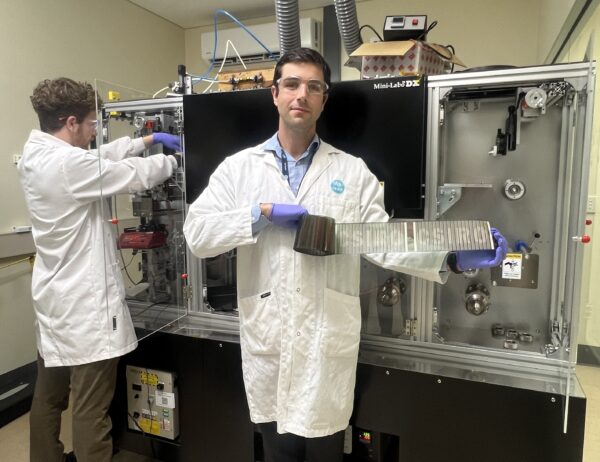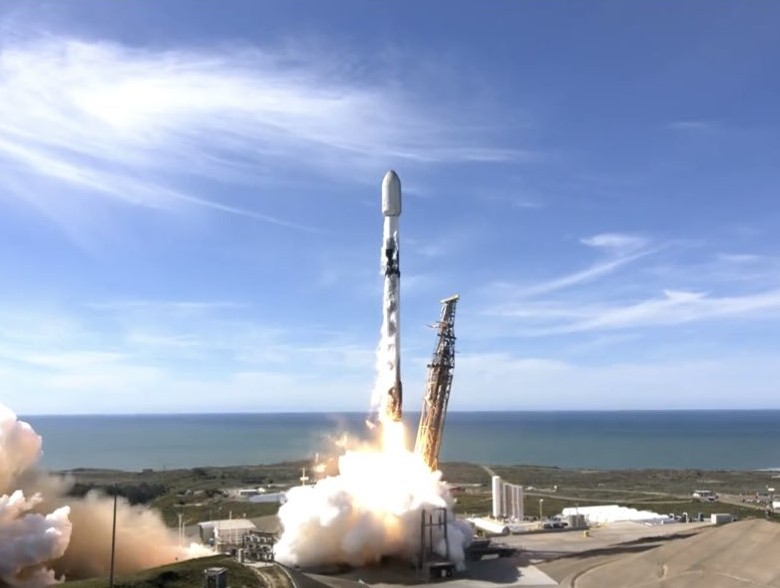Eight mini-modules of the Commonwealth Scientific and Industrial Research Organisation’s (CSIRO) printed flexible solar cells were attached to the surface of Sydney-headquartered space transportation provider Space Machine Company’s Optimus-1 satellite which was sent into orbit today from the United States.
Australia’s largest private satellite yet, Optimus-1 is one of the 53 payloads launched into space as part of American spacecraft manufacturer Space X’s Transporter-10 rideshare mission launched from the Vandenberg Space Force Base in California.
The 270-kilogram Optimus orbital servicing vehicle is to be deployed in an orbital slot where it will then commence its full testing campaign. Part of that will be an investigation of the CSIRO’s printed flexible solar cells that were attached to the surface of the satellite.
The CSIRO is exploring the potential of printed flexible solar cells as a reliable energy source for future space endeavors with the organisation’s Space Program Director, Dr Kimberley Clayfield, saying a major challenge in the development of spacecraft is low-mass, high-efficiency power systems.
“CSIRO’s printed flexible solar cells could provide a reliable, lightweight energy solution for future space operations and exploration,” she said.
“If the space flight test reveals similar performance as we’ve shown in the lab, this technology offers significant advantages over traditional silicon-based solar.”

Image: CSIRO
CSIRO Renewable Energy Systems Group Leader Dr Anthony Chesman said CSIRO-developed perovskite cells have the potential to transform spacecraft power systems and enable new possibilities for future space missions.
“Our perovskite cells have been achieving incredible outcomes on earth and we’re excited that they’ll soon be showcasing their potential in space,” he said, adding that in situ testing would secure information on the performance of the cells as they orbit the planet.
“We will get information on how the panels are holding up under the extreme conditions in space and data on the efficiency they achieve,” he said.
Chesman said the team had already undertaken pioneering research on the likely performance of the cells in a space environment.
“Based on our research we expect our printed flexible solar cells will stand up to the effects of cosmic electron and gamma radiation which can compromise the performance and integrity of traditional solar cells,” he said.
“We are also confident these cells will outperform traditional cells in cases where sunlight hits them at non-optimal angles.
“The feedback we receive from the satellite will provide valuable insights into the practical application of our technology and inform future technology development.”
This content is protected by copyright and may not be reused. If you want to cooperate with us and would like to reuse some of our content, please contact: editors@pv-magazine.com.









7 comments
By submitting this form you agree to pv magazine using your data for the purposes of publishing your comment.
Your personal data will only be disclosed or otherwise transmitted to third parties for the purposes of spam filtering or if this is necessary for technical maintenance of the website. Any other transfer to third parties will not take place unless this is justified on the basis of applicable data protection regulations or if pv magazine is legally obliged to do so.
You may revoke this consent at any time with effect for the future, in which case your personal data will be deleted immediately. Otherwise, your data will be deleted if pv magazine has processed your request or the purpose of data storage is fulfilled.
Further information on data privacy can be found in our Data Protection Policy.